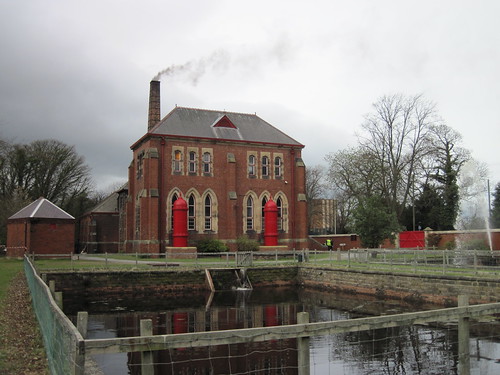The Bulmer Stone lies sadly stranded on a little shelf behind a fence since 1923.

It is a Shap granite boulder deposited at the end of the ice age and once marked the northern edge of Darlington and stood on the roadside.

The name is said to come from Willy Bulmer the borough crier who announced news from it. It was also known as the ‘Battling Stone’Â by the towns weavers who once beat their flax upon it.
It is also associated with the ancient rhyme :-
In Darnton towne ther is a stane,
And most strange is yt to tell,
That yt turnes nine times round aboute
When yt hears ye clock strike twell.
 Show on map
Show on map
















